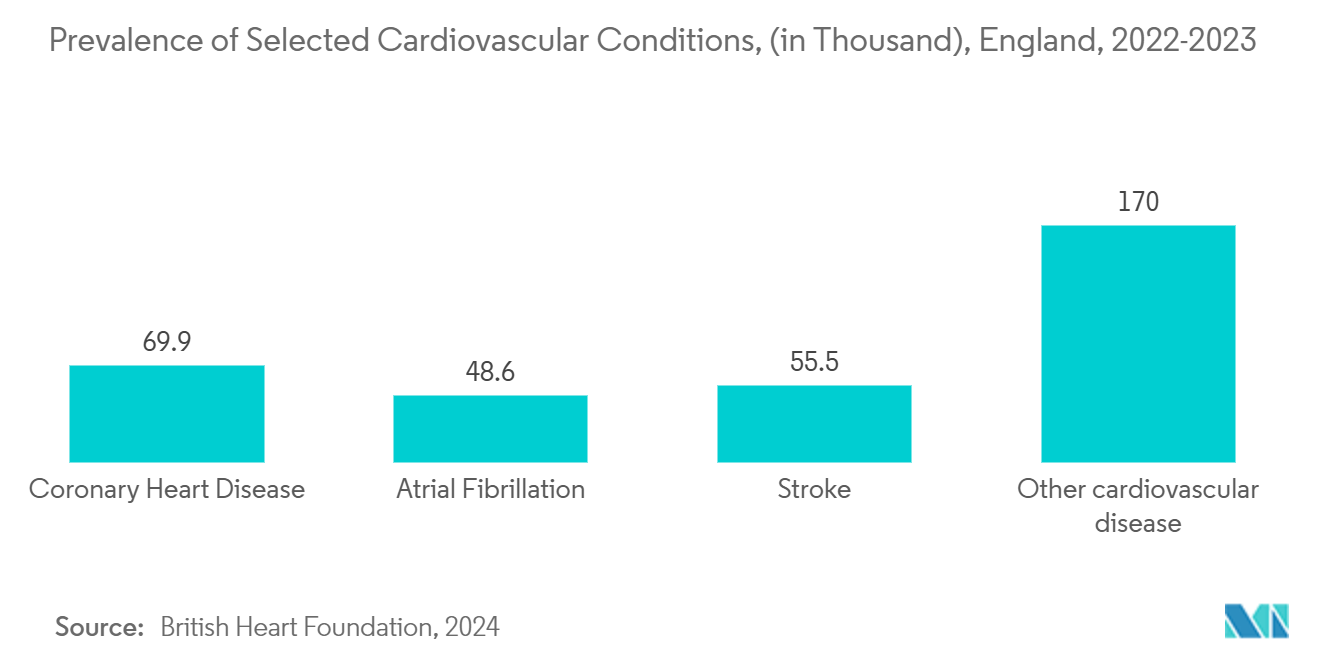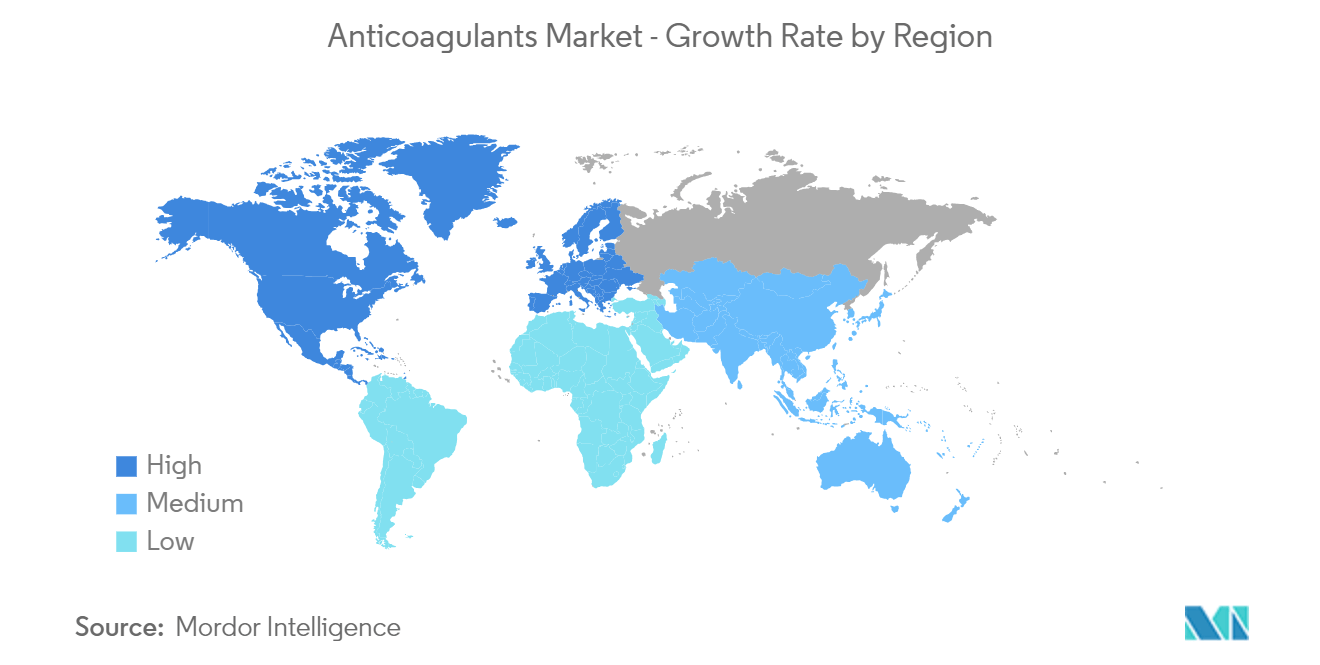Market Trends of Anticoagulants Industry
The Novel Oral Anticoagulants (NOACs) Segment is Expected to Hold Significant Market Share in the Anticoagulants Market During the Forecast Period
The novel oral anticoagulants (NOACs) segment is expected to hold a significant market share in the anticoagulants market and is anticipated to show a similar trend during the forecast period owing to the growing adoption of the novel oral anticoagulants (NOACs) in developing countries and the high preference of NOACs over the warfarin.
Novel oral anticoagulants (NOACs) are a new class of anticoagulant drugs. Moreover, these are safe (lower incidence of major bleeding), convenient to use, have no interactions with food, and have a shorter half-life. Some of the NOACs include dabigatran, rivaroxaban, apixaban, and edoxaban. These can be used to prevent and treat atrial fibrillation/myocardial infarction, deep vein thrombosis (DVT), and pulmonary embolism.
According to the Centers for Disease Control and Prevention (CDC) update in May 2024, each year in the United States, approximately 900,000 people ((1 to 2 per 1,000 population) could be affected by deep vein thrombosis. Also, according to the British Heart Foundation (BHF) January 2024 report, 7.6 million people in the United Kingdom live with heart and circulatory disease as of 2024. Thus, the increasing incidences of cardiovascular disorders, venous thromboembolism (VTE), and advancements in the development of novel products are the key driving factors in the novel oral anticoagulants (NOACs) segment.
During the forecast period, market growth is expected due to anticipated product launches and approvals. For instance, in June 2024, India's Central Drug Standard Control Organization approved Zuventus Healthcare's production and distribution of edoxaban, a new oral anticoagulant. However, the approval is contingent upon the company conducting a Phase IV clinical trial to further assess the drug's safety and efficacy. Similarly, in June 2022, Apotex Inc., Canada's leading pharmaceutical manufacturer of generic medicines, launched APO-Apixaban tablets, Canada's first generic alternative to Eliquis. Hence, owing to the significant product approvals and further marketing of NOACs, it is expected to drive the segment growth during the forecast period.
Hence, due to the increase in cardiovascular disease and strategic product launches by the key players, the segment is estimated to hold a significant market share during the forecast period.

North America is Anticipated to Hold a Significant Market Share During the Forecast Period
North America is expected to hold a significant market share in the anticoagulants market due to the high demand for innovative products and the increasing prevalence of cardiovascular disorders in this region. For instance, according to the July 2022 Canadian Institute for Health Information (CIHI) update, about 2.4 million Canadians lived with heart disease in 2022. Also, as per the Heart Failure Report 2022, more than 100,000 Canadians are diagnosed with heart failure each year. Thus, with the increase in cardiovascular diseases, the demand for anticoagulants increases in the region, thereby boosting the market.
Also, the presence of top pharma and biotech companies involved in the development of therapeutics and the presence of well-established healthcare infrastructure are fueling the growth of the overall regional market to a large extent. For instance, in November 2023, Pharmascience Canada introduced pms-RIVAROXABAN, a generic drug entirely produced in Canada. This drug is classified as an anticoagulant, commonly known as a blood thinner. By directly inhibiting the activity of Factor-Xa, a key clotting factor, it effectively prevents the formation of blood clots pms-RIVAROXABAN comes in oral tablet forms of 2.5 mg, 10 mg, 15 mg, and 20 mg. For instance, in February 2022, CD Bioparticles, a manufacturer and provider of diverse drug delivery goods and services, launched several heparin products, including heparin biotin, heparin amine, and heparin thiol, and made available to support drug delivery research.
Therefore, due to the increase in cardiovascular disease and strategic activities by the key players, North America is estimated to hold a sizable proportion of the market during the forecast period.


